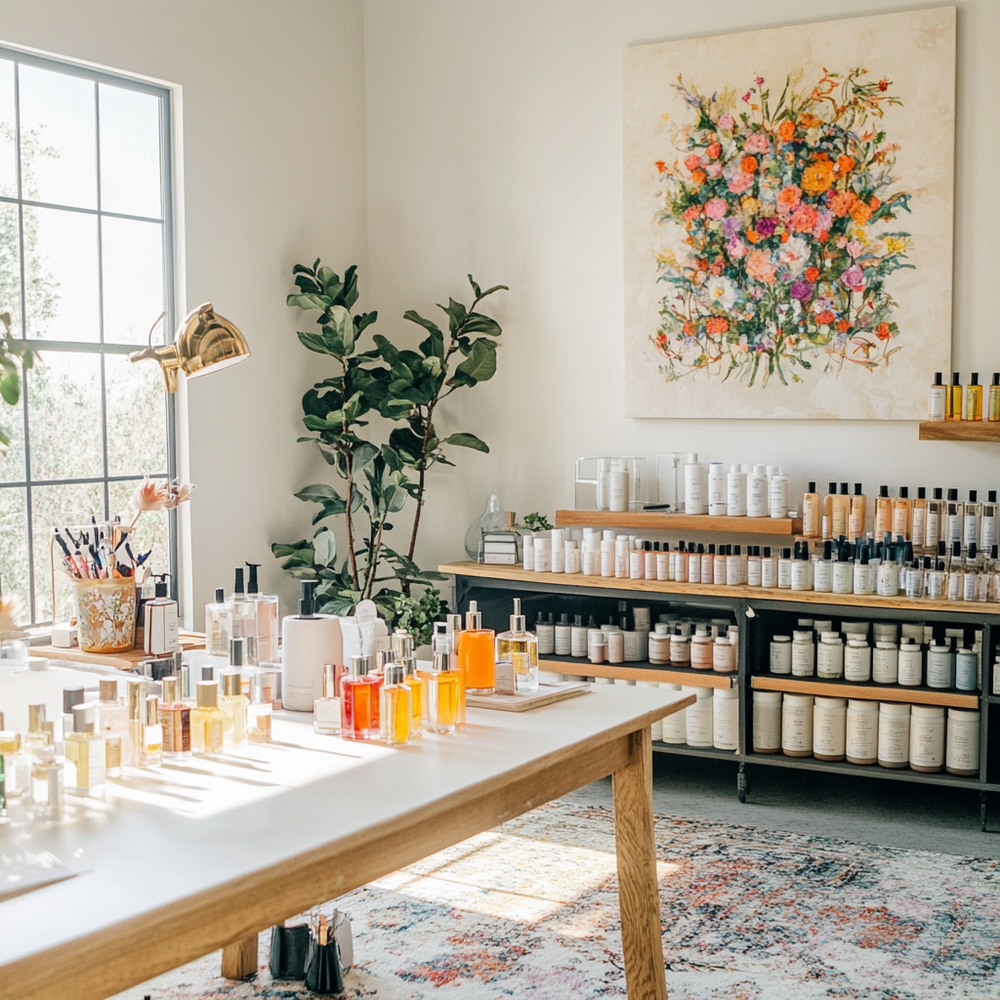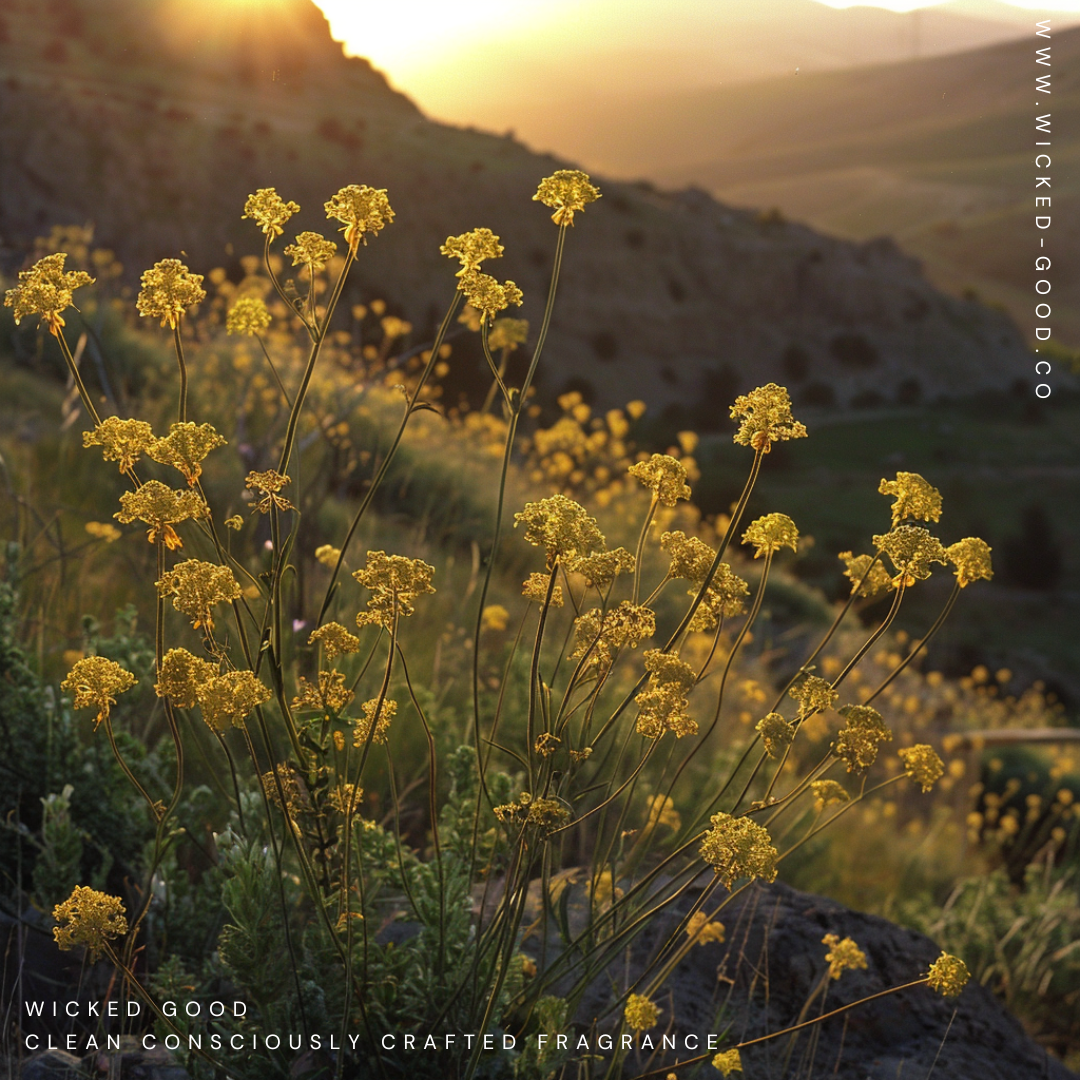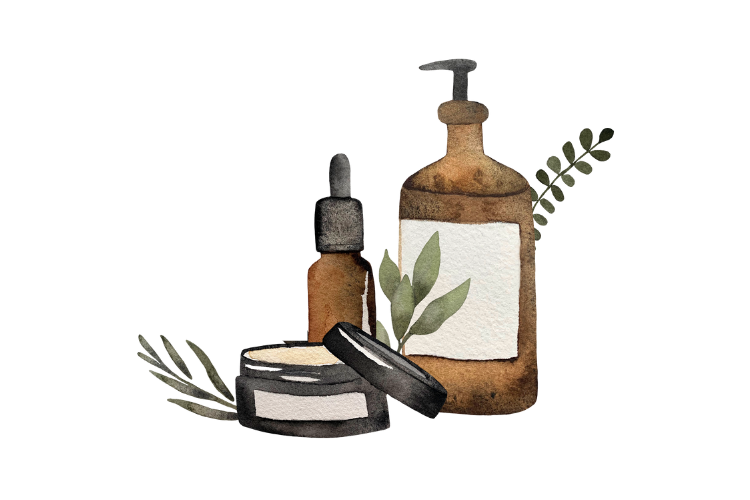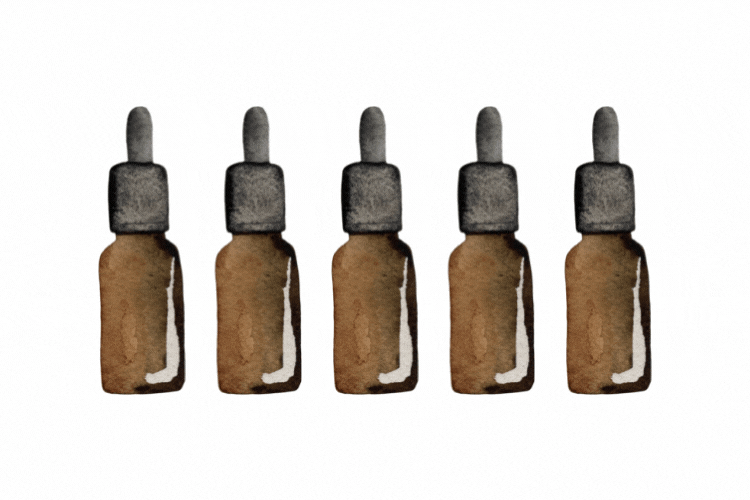Why Galbanum Is the Fragrance World’s Best Kept Green Secret
Galbanum: the green gold gum resin that’s been wowing noses (and hearts) for millennia. Tucked away on the craggy slopes of northern Iran, this sticky, aromatic treasure comes from hardy Ferula plants—chiefly Ferula gummosa (and its twin Ferula galbaniflua) and the fiery-hued Ferula rubricaulis.
Galbanum is more than just plant sap: it’s a story steeped in legend, medicine, and some of history’s best-kept perfumery secrets.
A Smelly Treasure from the Mountains
Imagine a windswept mountain range in northern Iran. On rocky slopes where most plants struggle, Ferula gummosa stands tall—fanning feathery, umbrella-like clusters of yellow blossoms high above the ground. Lacerate its stem, and a milky green resin oozes forth. That resin, when dried and cut into chips, is what perfumers and healers alike know as Galbanum.
This resin has a reputation for being an olfactory daredevil: at first sniff, you get a blast of piercing green—think rain-drenched pine needles, crushed dill, and a wink of balsamic mystery. Then, as it warms on skin or candle flame, it mellows into smoky, resinous sweetness. It’s like Mother Nature bottled springstorm energy—and then spiked it with something exotic.
Incense of Emperors and Pharaohs
Galbanum has bragging rights that stretch back to the dawn of civilization. Ancient Egyptians prized it for sacred rituals and mummification. Hieroglyphs whisper that they blended Galbanum into “holy incense,” believing its otherworldly scent could bridge mortal and divine realms. It was so revered that only priests and royalty were allowed to ignite its fragrant smoke in temple sanctuaries.
Legend says Cleopatra herself favored Galbanum incense when entertaining Antony—because nothing says “Roman conquest” like an atmosphere thick with herbal spicy smoke. Whether or not she really did, we’ll probably never know. But that lore alone cements Galbanum’s status as the original high end aromatherapy.
The Spice Rack Healer
Fast forward a few centuries to medieval Persia and Europe, and Galbanum was the go-to cure-all. Plague? Digestive woes? A case of the “melancholia blues”? Chew a little resin, mix it into an herbal tincture, or anoint your temples with it—and voilà, you were supposedly back in fighting form.
Medical manuscripts dubbed it “Green Dragon’s Tears,” crediting it with antiseptic, anti inflammatory, and digestive stimulating powers. Healers would grind the resin to a powder and mix it with honey to soothe upset stomachs—or burn it in mixtures to purify the air of disease. Granted, they didn’t revel in double blind clinical trials, but hey, people swore by it.
Legends That Laugh in the Face of Logic
If you think medieval medicine sounds wild, wait until you hear the folklore. In some Iranian villages, people believed a small pouch of Galbanum resin around their neck would ward off evil spirits and hexes. Newlyweds burned it at sunrise to ensure fertility and blissful harmony in marriage. Shepherds tucked it in their flocks’ pens to keep wolves at bay (though veterinarians might raise an eyebrow at that one).
One tale tells of a 12th-century mystic who could summon rain by burning Galbanum under a full moon—white plumes swirling skyward like ghostly dancers. Whether this actually coaxed clouds or simply impressed nearby farmers, the story spread across trade routes, adding to Galbanum’s mythical aura.
From Bible to Perfume Counter
Galbanum even steps onto the biblical stage. Some scholars argue that the “frankincense and myrrh” gifts mentioned in the New Testament may have included Galbanum in earlier versions. Whether that’s true or not, it’s clear ancient incense recipes were far more complex than what we find on store shelves today.
In the modern perfume arena, Galbanum is the secret sauce for so called “green” fragrances. It’s often used as a heart or base note to impart crisp, verdant accents that last. Iconic scents like Guerlain’s Vetiver and many niche “forest walk” perfumes owe their fresh, dewy character to a dash of Galbanum. When master perfumers want to evoke a glade at dawn, crushed foliage underfoot, Galbanum is their green fairy.
How It’s Harvested (Without Getting Yet Another Splinter)
Harvesting Galbanum resin isn’t for the faint hearted. Workers brave rocky crags in spring, using hooked knives to make shallow cuts in the plant’s stem. The oozing resin is allowed to dry into amber-green beads, which are then harvested by hand. One misstep, and you’re nursing bruises or snagged on spiny Ferula leaves—not exactly a leisurely botanical stroll.
These beaded resins must be sorted by size and color: the palest, clearest chunks fetch top dollar in perfumery, while darker bits go to incense-makers and traditional medicine. Despite its labor-intensive harvest, demand remains high—particularly among niche fragrance houses that prize authenticity above all.
Unexpected Uses in Today’s World
Beyond niche perfumery, Galbanum has found its way into modern wellness trends. Artisanal soap makers swirl it into herbal bar soaps for a green zing that’s hard to mimic synthetically. Candle artisans blend it with frankincense and cedarwood for “forest retreat”, aka forest bathing candles that promise stress relief (and smell like a woodland spa).
DIY enthusiasts create facial toners with tiny amounts of Galbanum tincture, hoping its antiseptic qualities will calm acne and inflammation. Whether science backs up all these claims or not, we’re living in the golden age of DIY green beauty—and Galbanum sits at the heart of it.
Galbanum Trivia to Drop at Your Next Party
-
Name Drop: The word “Galbanum” likely comes from Old Persian “golab,” meaning “flower water,” even though it’s a resin, not a distillate. Linguistic curveball, right?
-
Um…Baby? Some perfumers claim Galbanum has a faint, almost vanilla-like sweetness at its edges—like a minty-green marshmallow. Don’t knock it till you sniff it!
-
Hollywood Green Screen: Galbanum’s intensely green aroma once inspired a special-effect “green” theme in a 1970s sci-fi film—yes, there’s a rumor that the scent profile influenced the color palette. We’re still digging for proof.
-
Market Mania: True, pure Galbanum essential oil is so expensive that bargain-bin “green” fragrance oils often skip it—so next time you sniff a super cheap “foresty” candle, odds are you’re smelling synthetic shortcuts.
Why Perfume Geeks Can’t Get Enough
For serious fragrance aficionados, Galbanum is the ultimate benchmark of “natural green.” Its complexity can’t be replicated by lab-made molecules. That slight smokiness, the shimmering balsamic undertones, the pinch of spicy bitterness—these layers unfold over minutes on skin. It’s like watching a drama, versus a cartoon.
Pair it with violet leaf for a “dewy meadow” vibe, or with leather and patchouli for a rugged, outdoorsy swagger. Galbanum is the Swiss Army knife of natural perfumery: versatile, bold, and impossible to ignore.
Here’s an expanded dive into our green gold wonder resin—Galbanum—and how it weaves its magic through five of our signature Wicked Good fragrances.
Here’s an expanded dive into our green-gold wonder resin—Galbanum—and how it weaves its magic through five of our signature Wicked Good fragrances. We’ll link you straight to each scent so you can experience the verdant drama for yourself, plus give you pairing notes to spark your own custom blends. Let’s go!
1. Sap + Moss
Link: https://wicked-good.co/products/sap-moss
What It Smells Like
Sap + Moss is like the moment you plunge your hand into a dew-sleek pine log: green, resinous, and mineral-damp. You get that Galbanum-like sharp-green—think crushed fern fronds—melded with the cool, earthy depth of moss settling over centuries-old bark. On skin, it blooms into a soft suede-like undercurrent, as if forest floor and sap-slicked trunk conspired on a fragrance duet.
2. Wild Earth
Link: https://wicked-good.co/products/wild-earth
What It Smells Like
Wild Earth is Galbanum’s mischievous cousin—bracing green meets sunbaked clay. Imagine walking through a scrubby meadow where hoary sage, crushed fern, and resin droplets glint like hidden jewels under a desert sun. Hints of dry cedar and spearmint give it a dusty-fresh finish that feels both untamed and ancient.
3. The Bug
Link: https://wicked-good.co/products/the-bug
What It Smells Like
Don’t let the name scare you—The Bug channels the thrill of a late-summer garden alive with life. Its opening is a kaleidoscope: Galbanum’s wet-green bite meets candied black currant, vivid like crushed berries on your fingertips. Mid-notes of jasmine and honeysuckle swirl in, adding a sultry, white-floral softness before settling into a warm, amber-gum base that whispers of secret midnight blooms.
4. Lilac Perfume
Link: https://wicked-good.co/products/lilac-perfume
What It Smells Like
Lilac Perfume is spring morning distilled. It opens on a cloud of soft, honeyed petals—think heady, powdery lilac blossoms soaked in sunshine. The Galbanum influence shows as a faint undercurrent of green stalks and crushed leaves, giving this sweet-floral a crisp, dewy edge. The dry-down drifts into creamy musk and iris, like petals pressed between book pages.
5. Verveine 32
Link: https://wicked-good.co/products/verveine-32-fragrance
What It Smells Like
Verveine 32 is sunshine in a bottle. Picture hand-picked verbena leaves steeped in sparkling citrus—lemon, lime, and a hint of grapefruit—then amped up with Galbanum’s verdant snap. The result? An effervescent green cocktail that perks you up like iced herbal tea on a hot day. The finish is a soft herbal-musk veil, light enough for warm weather, but with enough green backbone to keep it from feeling insubstantial.
Why Galbanum Matters in Each Blend
Galbanum’s unique green-resin profile acts like the secret green thread sewing these five scents into one cohesive garden-of-aromas. Whether you crave the mineral-damp punch of Sap + Moss, the sun-baked earthiness of Wild Earth, the nocturnal nectar of The Bug, the soft-powdery spring of Lilac Perfume, or the sparkling herbal-citrus of Verveine 32, Galbanum injects:
-
Green Complexity: Its faceted verdancy deepens and sharpens top and heart notes, making each blend feel vibrant and alive.
-
Resinous Warmth: As it warms, Galbanum’s balsamic sweetness unfolds, giving base notes an exotic glow and lasting power.
-
Natural Authenticity: No synthetic “green accord” can match the wild-crafted character of real Galbanum resin—each batch carries tiny variations that perfumers love.
DIY Layering Tips: Reinvent Your Signature
Don’t stop at pairing suggestions—experiment! Here are three punchy layering combos to try:
-
Forest Goddess:
-
Start with Sap + Moss on pulse points.
-
Overlap a mist of Lilac Perfume on the hair and décolletage.
-
Finish with a dab of cedar on wrists.
Result: Imagine wild orchids blooming among pine boughs.
-
-
Garden at Dusk:
-
Spritz The Bug on skin.
-
Lightly dust Wild Earth on neck and chest.
-
Carry a lavender sprig in your pocket.
Result: Crisp green top notes give way to evening’s honeyed floral glow.
-
-
Citrus Grove Adventure:
Galbanum’s story—from ancient Persian slopes to modern fragrance labs—is one of resilience and mystery. It’s the green spark that ignites our Sap + Moss, Wild Earth, The Bug, Lilac Perfume, and Verveine 32 into truly wicked aromatic adventures. Next time you reach for one of these scents, remember you’re wearing a piece of perfumery history—an aromatic gum resin that’s fueled myth, medicine, and masterful blends for thousands of years.
Ready to make Galbanum your green muse? Click on any of the links above, snag a bottle (or five), and let the layering—and the legends—begin.
A Resin That Keeps on Giving
From ancient temple fires to modern vanity trays, Galbanum has earned its place as the green wonder-resin of the world. It’s a wild ride of history, legend, and chemistry—from warding off evil spirits to inspiring haute couture fragrances. Whether you’re an aromatherapy devotee, a perfume superfan, or simply love a story that’s equal parts botany and sorcery, Galbanum delivers on all fronts.
Next time you spritz that “fresh-cut grass” perfume or light a pricey “woodland retreat” candle, look for Galbanum on the label. You’ll be in on one of the oldest—and coolest—aromatic secrets the mountains of Persia ever gave us.
































Leave a comment